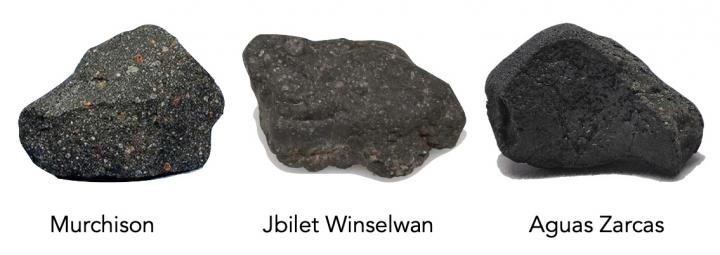Scientists baked meteorites in an oven to investigate the atmospheres of alien planets

Scientists baked meteorites in an oven and studied the gases they released to investigate the atmospheres of rocky planets.
In a new study, researchers at the University of Calfornia, Santa Cruz took samples of three pristine meteorites that landed at different times and places around the world and baked them in a furnace at 2,192 degrees Fahrenheit (1,200 degrees Celsius). The scientists analyzed the gases that came from minerals in the rocks as they heated up in this "oven."
"This information will be important when we start being able to observe exoplanet atmospheres with new telescopes and advanced instrumentation," co-author Maggie Thompson, a graduate student in astronomy and astrophysics at UC Santa Cruz, said in a statement.
Related: How meteor showers work (infographic)
Fireballs, spaceships, iguanas: 7 strange things that fell from the sky in 2020

The three baked meteorites are all CM-type carbonaceous chondrites, which are made of material thought to be representative of the same type of stuff that formed our sun and the planets in our solar system.
"These meteorites are leftover materials from the building blocks that went into forming the planets in our solar system," Thompson said in the same statement. "Chondrites are different from other types of meteorites in that they didn't get hot enough to melt, so they have held onto some of the more primitive components that can tell us about the composition of the solar system around the time of planet formation."
Get the Space.com Newsletter
Breaking space news, the latest updates on rocket launches, skywatching events and more!
These meteorites included the Murchison chondrite, which fell in Australia in 1969; Jbilet Wilselwan, which was found in Western Sahara in 2013; and Aguas Zarcas, which landed in Costa Rica in 2019.
The furnace the crash-landed space rocks were baked in was hooked up to a vacuum system and a mass spectrometer, a tool that separates isotopes and molecules according to their mass that allows scientists to determine the composition of a sample. This process essentially simulates the formation of a planet's atmosphere early on.
"When the building blocks of a planet are coming together, the material is heated and gases are produced, and if the planet is large enough, the gases will be retained as an atmosphere," coauthor Myriam Telus, an assistant professor of Earth and planetary sciences at UC Santa Cruz, said in the same statement.
"We're trying to simulate in the laboratory this very early process when a planet's atmosphere is forming so we can put some experimental constraints on that story," Telus said. "It may seem arbitrary to use meteorites from our solar system to understand exoplanets around other stars, but studies of other stars are finding that this type of material is actually pretty common around other stars."
The researchers found water vapor to be the main gas produced by the meteorites during the "baking" process, but the rocks also produced significant amounts of carbon monoxide and carbon dioxide and smaller amounts of hydrogen and hydrogen sulfide gases.
They compared these findings with predictions they made based on the composition of the meteorites."Qualitatively," Thompson said, "we get pretty similar results … but there are also some differences."
This is not the first time that scientists have heated meteorites to study them, and these researchers hope to continue this work with more meteorites down the road. "You need experiments to see what actually happens in practice. We want to do this for a wide variety of meteorites to provide better constraints for the theoretical models of exoplanetary atmospheres," Thompson said.
This work was described in a study published April 15 in the journal Nature Astronomy.
Email Chelsea Gohd at cgohd@space.com or follow her on Twitter @chelsea_gohd. Follow us on Twitter @Spacedotcom and on Facebook.
Join our Space Forums to keep talking space on the latest missions, night sky and more! And if you have a news tip, correction or comment, let us know at: community@space.com.

Chelsea “Foxanne” Gohd joined Space.com in 2018 and is now a Senior Writer, writing about everything from climate change to planetary science and human spaceflight in both articles and on-camera in videos. With a degree in Public Health and biological sciences, Chelsea has written and worked for institutions including the American Museum of Natural History, Scientific American, Discover Magazine Blog, Astronomy Magazine and Live Science. When not writing, editing or filming something space-y, Chelsea "Foxanne" Gohd is writing music and performing as Foxanne, even launching a song to space in 2021 with Inspiration4. You can follow her on Twitter @chelsea_gohd and @foxannemusic.
